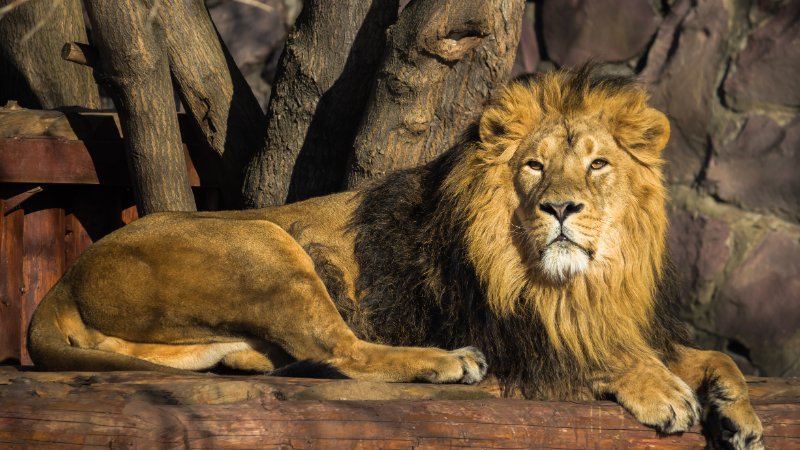Lion Roars as a Form of Communication: Beyond Territorial Claims
"Lion Roars as a Form of Communication: Beyond
Territorial Claims"
In the heart of the African savanna, where the golden
grasses sway under the embrace of the wind, a primal symphony reverberates—the
mighty roar of the lion. This iconic call echoes through the landscape,
transcending mere sound to become a multifaceted form of communication that
reveals a rich tapestry of information about the lives, social dynamics, and
inner workings of these majestic predators. While often associated with
territorial claims, lion roars are far more nuanced, serving as a
multifunctional language that conveys messages of identity, relationships, and
intent. This article delves into the captivating realm of lion roars,
uncovering their role as a sophisticated mode of communication that goes beyond
territorial declarations.
Territorial Assertions and Beyond
Lion roars undeniably play a central role in demarcating and
defending territories. The resonant baritone of a lion's roar sends a clear
signal to rival prides, asserting ownership and warding off potential
intruders. The deep, reverberating sound carries over long distances, serving
as a vocal "fence" that delineates boundaries and minimizes
confrontations.
1. Territory Establishment: Roaring is often used to
establish territorial dominance. A pride's resident males deliver powerful
roars that not only serve to proclaim their presence but also convey their
strength and readiness to defend their domain.
2. Intraspecific Communication: Roaring also serves
as a means of intraspecific communication, allowing members of the same pride
to locate and reunite with each other, particularly during the cover of night.
Pride members can identify each other based on individual roars and nuances in
vocalizations.
3. Identity and Pride Structure: Roaring patterns
contribute to pride identity and structure. Each pride has its distinct vocal
signature, composed of variations in the roars of individual members. This
signature aids in identifying the pride's composition and distinguishing it
from neighboring groups.
Social and Reproductive Significance
Lion roars transcend territorial functions, carrying a
wealth of information about social relationships, reproductive status, and
pride dynamics.
1. Coordination of Activities: Roaring helps
coordinate activities within the pride, particularly during periods of movement
or when individuals are temporarily separated. Lionesses and cubs recognize the
roars of pride males, which can facilitate reunions after hunts or excursions.
2. Male-Female Interactions: Roaring is integral to male-female
interactions, particularly during courtship and mating. Females in estrus
respond to the roars of males, indicating their reproductive readiness and
triggering the synchronization of mating behaviors.
3. Intergroup Dynamics: Lion roars also play a role
in intergroup interactions, providing valuable information about the presence
and composition of rival prides. When a new male coalition takes over a pride,
their roars can influence neighboring prides' behaviors and movements.
Individual Recognition and Identity
Each lion's roar carries distinctive traits that contribute
to individual recognition and identity.
1. Vocal Variability: Lion roars vary in pitch, tone,
and frequency, contributing to the uniqueness of each individual's vocal
signature. This variability allows lions to recognize each other based on
auditory cues, even in the darkness of night.
2. Learning and Imitation: Young lions learn to roar
through imitation and practice. Cubs learn the distinct roars of pride members,
developing their own vocalizations as they mature. These learned vocalizations
contribute to the cohesion of the pride.
3. Evolutionary Significance: The ability to
recognize individual roars may have evolved as a means of reducing infanticide
within prides. Lionesses and resident males can differentiate between familiar
and unfamiliar individuals, potentially reducing aggression toward cubs from
outside males.
Cultural Significance and Conservation
Beyond the scientific lens, lion roars hold cultural and
symbolic significance, shaping human perceptions and inspiring reverence for
these majestic creatures.
1. Symbolism of Power: The resonant roar of the lion
has long been associated with power, majesty, and nobility across cultures.
Lions' vocalizations evoke awe and admiration, reinforcing their status as apex
predators.
2. Conservation Awareness: Lion roars have become
symbols of conservation efforts to protect these iconic predators. The haunting
call of the lion serves as a call to action, urging humanity to safeguard their
habitats and secure their future.
Conclusion
The lion's roar is a symphony that resonates through time,
carrying messages that transcend the boundaries of the animal kingdom. While
territorial assertions are a fundamental aspect of lion vocalizations, their
roars serve as a multifunctional language that conveys messages of identity,
social relationships, and intent.
As we listen to the resonant echoes of lion roars across the
savannas, we glimpse the intricacies of a communication system shaped by
evolution, social dynamics, and the imperatives of survival. The lion's roar
invites us to contemplate the richness of the natural world's languages—a
mosaic of sounds, behaviors, and interactions that offer a glimpse into the
profound interconnectedness of life on Earth.

.jpg)


Comments
Post a Comment